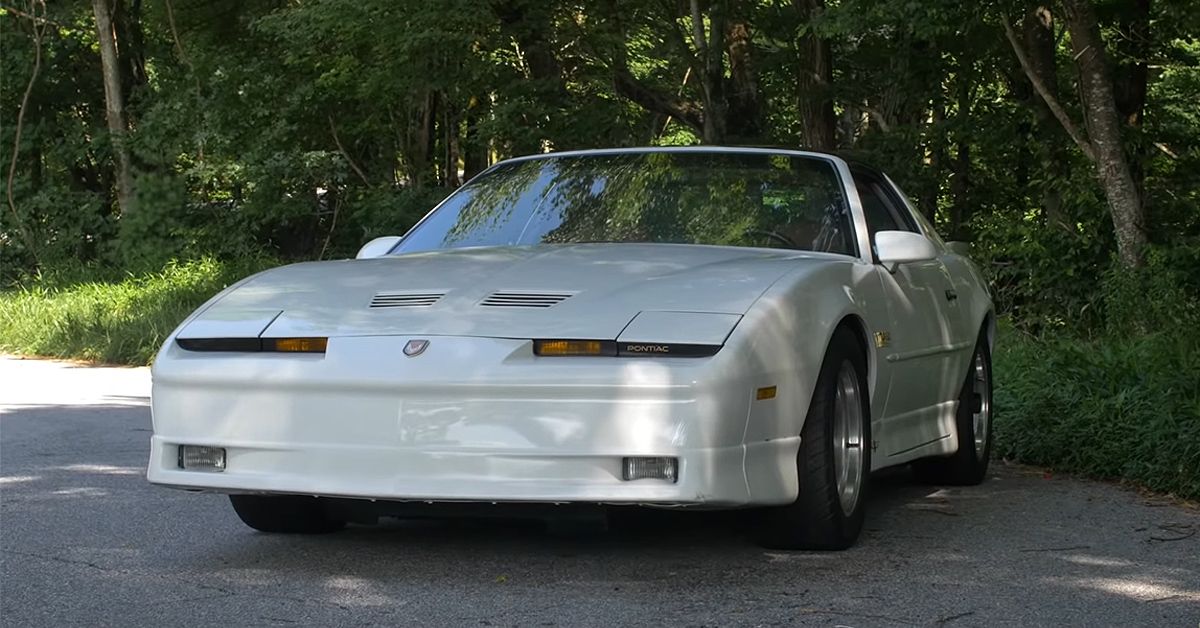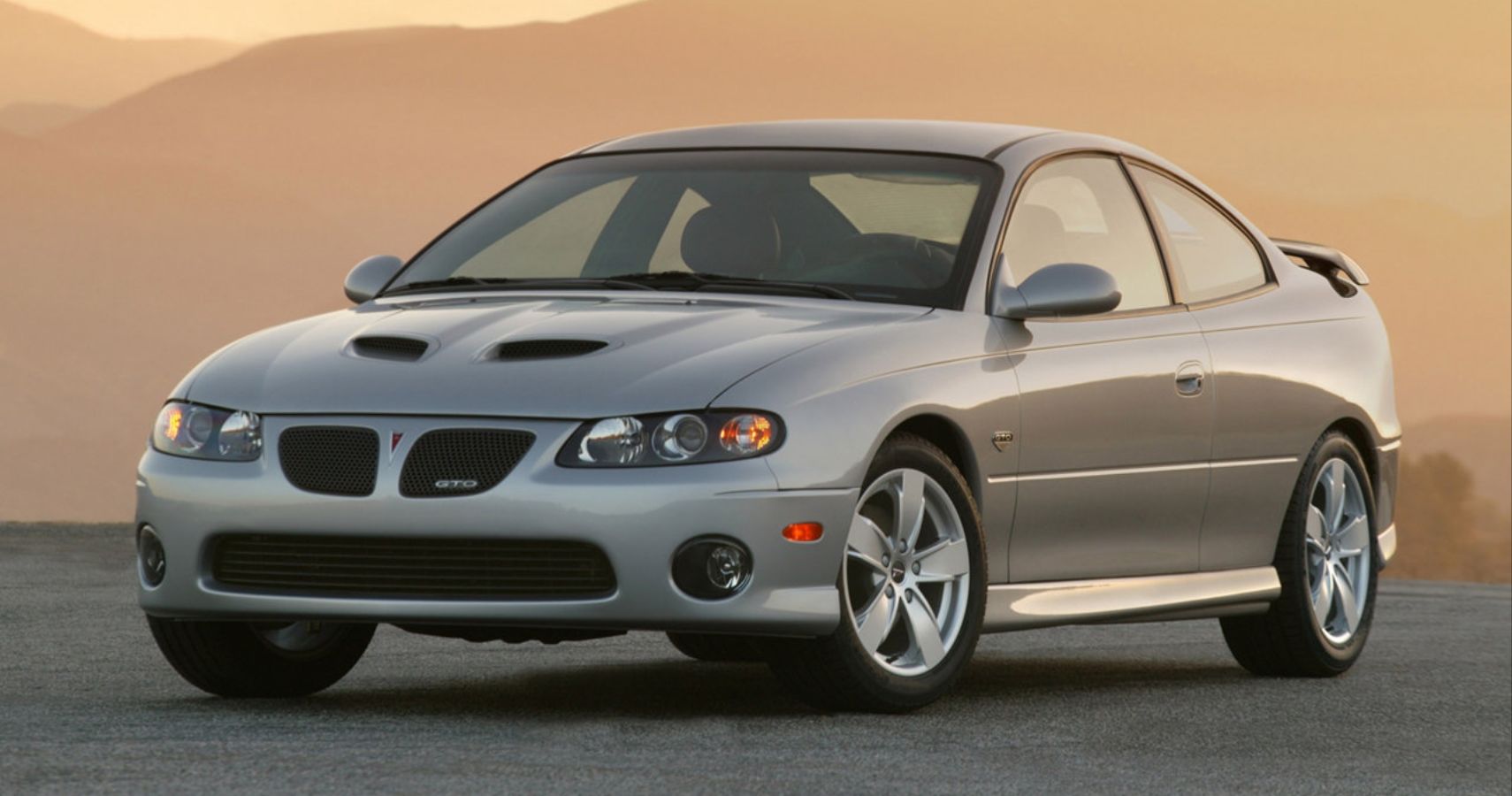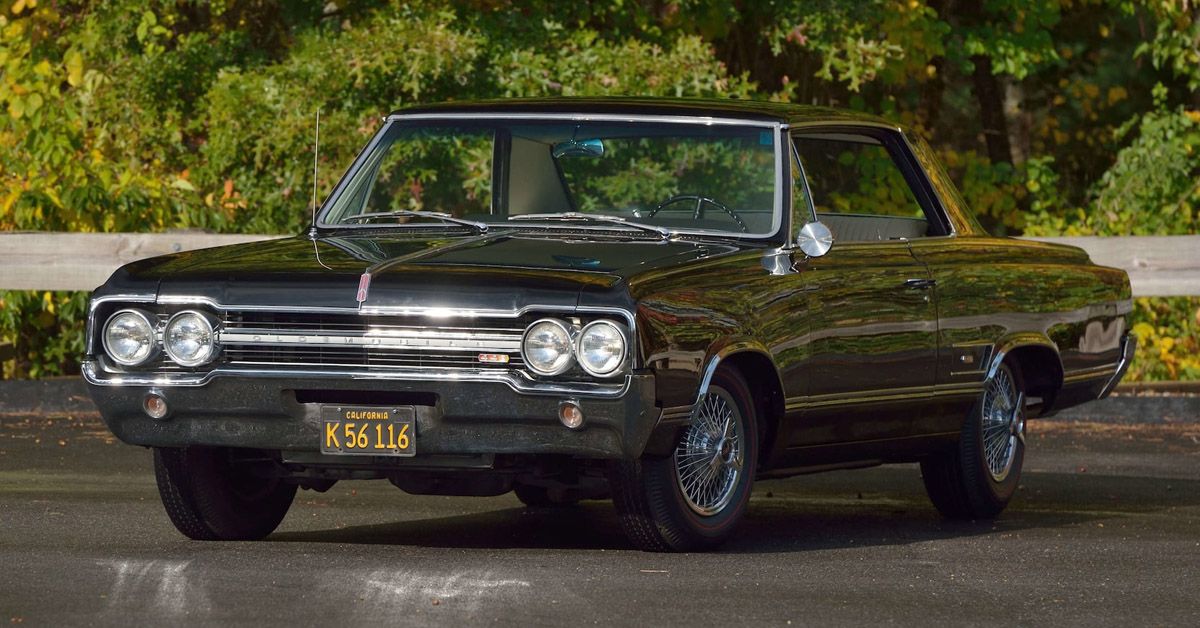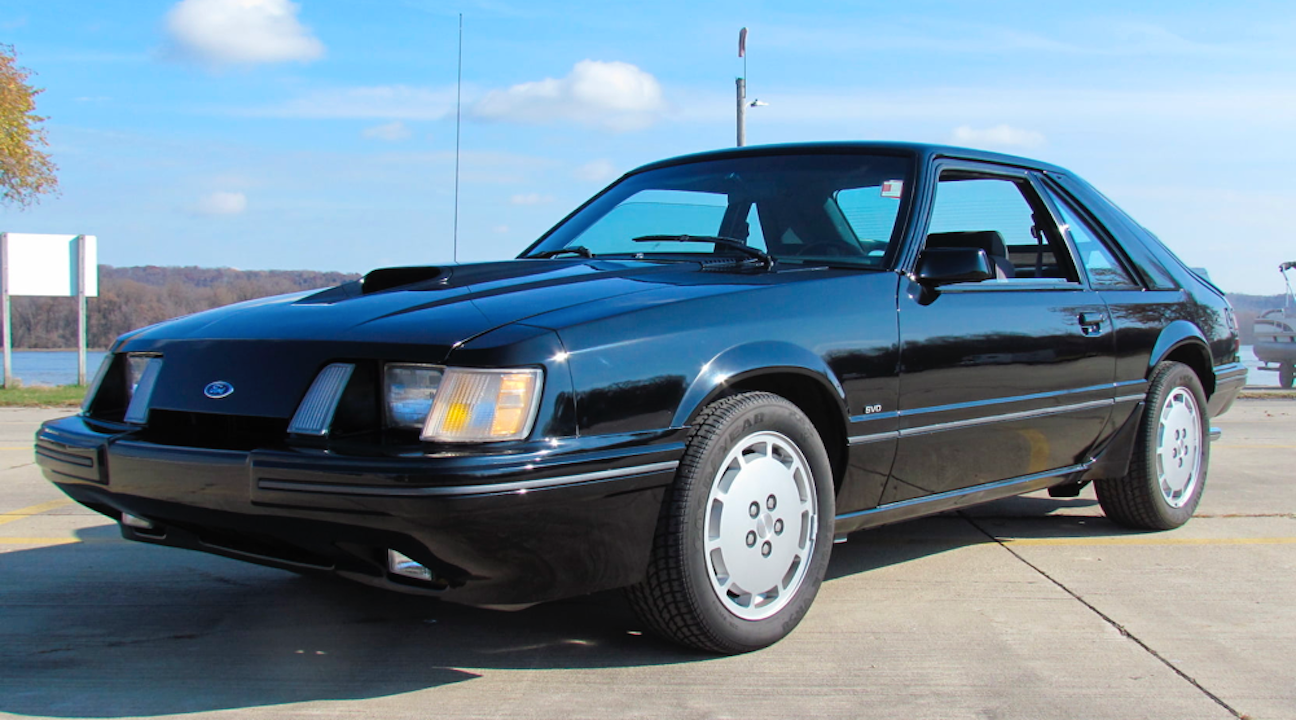Not every great muscle car with a powerful engine and RWD layout received the respect it deserved.
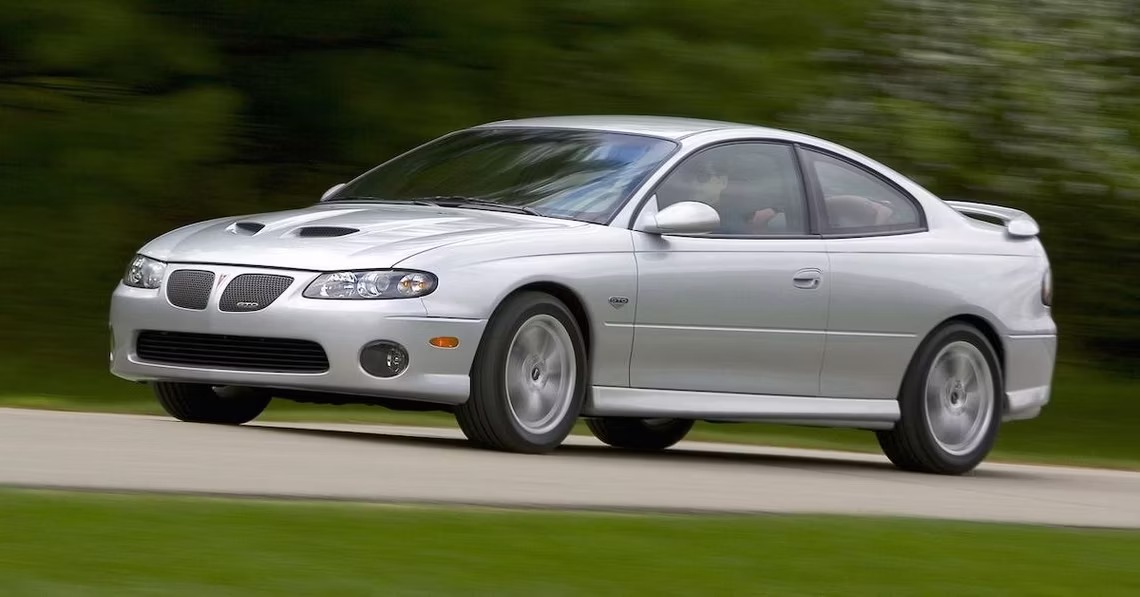
Since the initial muscle cars of the 1960s like the Pontiac GTO and Ford Mustang, enthusiasts have enjoyed wonderful creations from many American automakers. From the 1970 Plymouth Barracuda Hemi to the 1993 Ford Mustang Cobra, there’s been an opportunity for exciting performance no matter the decade. And the formula has remained relatively unchanged since the beginning: a powerful engine, tuned suspension, and muscular styling on a somewhat affordable vehicle.
While some muscle cars enjoy particular notoriety — like the 1964 Pontiac GTO or the 1986 Buick Grand National — others go largely unrecognized. And that’s a shame. Because the most underrated muscle cars offer a combination of attributes among the best in the segment.
Let’s look at 10 forgotten muscle cars that deserve more respect.
10 1989 Pontiac Turbo Trans Am
The 1982-1992 Pontiac Firebird was a distinct departure from its predecessor, with its streamlined aerodynamic styling and drastic weight reduction. With the 1989 Turbo Trans Am (TTA), the Firebird reached new heights.
To extract maximum performance from the Firebird platform, Pontiac turned to engineering firm Prototype Automotive Services (PAS), who optimized the fitment of the turbo engine with special cylinder heads and stainless steel headers. With its turbocharged and inter-cooled 3.8-liter V6 producing 250 horsepower, the 1989 Pontiac Firebird TTA featured blazing 0-60 acceleration and superb top speed.
9 1968-1976 Chevrolet Nova SS
With its forward canted grille, sloping rear roofline, and bold SS badges, the Chevrolet Nova SS oozes American muscle. Introduced during the muscle car heyday of the 1960s, the Nova Super Sport often takes a back seat to more notable models like the Ford Mustang or Chevrolet Camaro. But that doesn’t mean it was any less potent, with the ’68 Chevrolet Nova SS offering an optional L34 396 cubic inch V8 with 375 horsepower.
8 2005 Pontiac GTO
In 2004, when Pontiac re-introduced the GTO, it received a tepid welcome. With other manufacturers turning back the clock with retro-inspired designs, this modern Pontiac muscle car was more akin to a basic sedan. But it was the mechanical bits that made the next-generation Pontiac GTO a special vehicle.
For the 2005 model year, the Pontiac GTO used a 6.0-liter V8 sourced from the C6 Corvette with an ample 400 horsepower and 400 lb-ft. of torque. Additionally, the ’05 GTO had Corvette-derived front braking components, 18-inch wheels, and a split rear exhaust.
7 2017 Dodge Charger SRT 392
Drivers can trust Dodge to impart fun and excitement into everyday vehicles, with creative color options and raucous V8 engines. And while vehicles like the Challenger look straight out of a bygone era, the Charger takes a more conservative approach. Because of that, the Dodge Charger SRT 392 goes largely unnoticed.
But the 392 cubic inch V8 under the hood is what makes this a special muscle car. With 485 hp and 475 lb-ft of torque clawing at the pavement, the 2017 Dodge Charger SRT 392 can run with anything on the planet.
6 1965 Oldsmobile 442
For drivers needing a versatile coupe that could still burn up the drag strip, the Oldsmobile 442 offered an appealing option. The 442 moniker stood for its 400 CI engine, four-barrel carburetor, and dual exhaust system. Those elements combined to create a burly vehicle that could run with more notable classic cars like the Ford Mustang 289.
Central to the 1965 Oldsmobile 442 was its stout V8 motor that made 345 hp and 440 lb-ft of torque — excellent figures even in today’s performance car market.
5 1979-1993 Ford Mustang 5.0
The third-generation Ford Mustang — also known as the “Fox body Mustang” — had a basic appearance compared to previous models. Unlike the sweeping lines of a 1965 Mustang Fastback, the Fox body Mustang has clean, taut styling.
And though the 70s and 80s brought emissions regulations that sapped horsepower, Ford’s 5.0-liter V8 kept the muscle car spirit alive for performance enthusiasts across the country. With its broad torque output and deep exhaust note, the “5.0” Mustang could still burn rubber with the best of them, yet did so on a modernized chassis with updated safety features.
4 1985-1990 Chevrolet Camaro IROC-Z
In the 60s and 70s, many muscle cars focused on straight-line performance. And that’s understandable, with strong acceleration providing one of driving’s foremost thrills. But as the 80s took shape, muscle car manufacturers turned their attention to handling, as evidenced by the third-generation Chevrolet Camaro. And with its upgraded mechanicals — including custom Delco-Bilstein shocks, Tuned Port Injection engine, and lower ride height — the IROC-Z Camaro set the bar for balanced muscle car performance.
3 1996-1999 Ford Taurus SHO
When the Ford Taurus arrived in the mid-’80s, it was a futuristic take on the family sedan. And for performance-focused buyers, the Super High Output (SHO) edition offered sportscar performance. But it wasn’t until the third-generation SHO —with its 235 horsepower V8 engine — the Ford Taurus SHO achieved muscle car status. Featuring an eight-cylinder powerplant with engineering input from Yamaha and Cosworth, the ’96-’99 Ford Taurus SHO could keep up with almost anything on the road.
2 2014-2017 Chevrolet SS
If you notice a Chevy SS drive-by, you might never guess there’s a 6.2-liter LS3 V8 from a Corvette engine lurking under the hood. The SS looks more like a contemporary luxury sedan than a brawny muscle car. GM took an Australian-made Holden Commodore and brought its unique brand of modern performance to the USA, giving driving enthusiasts the best of both worlds: usability and performance. And when you hear the exhaust note, you’ll understand why the Chevrolet SS is an underrated muscle car.
1 1984-1986 Ford Mustang SVO
Traditionally, muscle cars featured large displacement V8 motors with gobs of horsepower and poor fuel economy. But the Ford Mustang SVO brought a new formula to the segment with its advanced turbocharged 2.3-liter four-cylinder engine. Ford’s Special Vehicle Operations (SVO) team designed this special Mustang to highlight the brand’s technological abilities and racing success and succeeded on both fronts.
The Ford Mustang SVO brought improved handling, lower curb weight, and increased fuel economy over its 5.0-liter sibling, the GT model. And with less than 10,000 produced, it remains a rare find for true muscle car enthusiasts.



